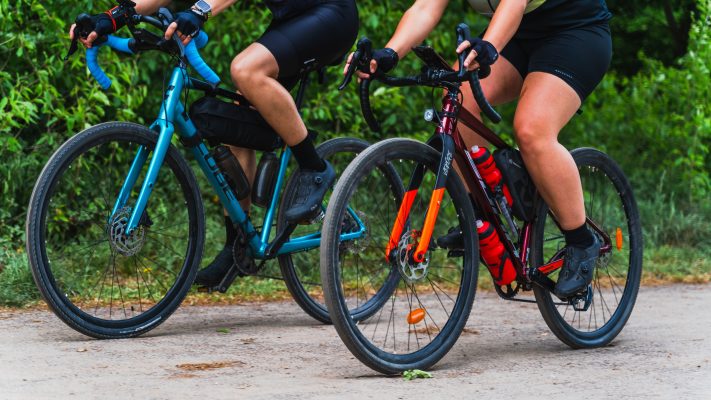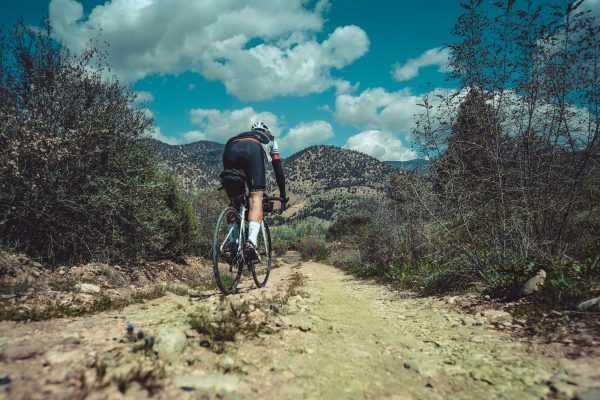I have always been riding my long distance rides on safe paved roads…until last week. A friend of mine has two gravel bikes and invited me for a 60 km long off road gravel ride. I must admit… I was interested in gravel riding. Some say it offers the best of both worlds, road racing and MTB, but for me it was always neither fish nor flesh. I must admit…a second time… I was happily surprised afterwards. Yes, I am even pretty sure I will hit those gravel trails soon again and I even consider buying a gravel bike and some decent gravel shorts. And that’s exactly what I would like to talk about today.
You can go for a standard bib shorts but I would suggest to go for a decent pair of gravel shorts. They’re designed to be comfortable and supportive for long rides on roads and trails alike. This guide will walk you through the ins and outs of choosing the perfect pair for your needs.
What is gravel riding?
Gravel riding is a type of road cycling that focuses on the roads less traveled. It’s a mix between off-road cycling and road cycling, and it’s one of the fastest-growing trends in the sport today.
It’s also a great way to explore your local countryside. Many cyclists find that it provides an amazing sense of freedom while giving them a chance to discover new areas they may not have known existed before!
If you’re interested in getting into gravel riding, but don’t know where to start or what gear you need, we’ll cover all those things here in this guide!
What are gravel shorts?
Gravel shorts are a type of cycling apparel that are designed to be worn over your normal cycling shorts, such as bibs or tights. They have several pockets to store essentials like tools, food, and water bottles. Gravel shorts are ideal for riding on unpaved surfaces like roads with gravel or dirt shoulders. You can use them in conjunction with a mountain bike but they will not have the same features as dedicated mountain bike apparel.

Modular design of gravel shorts
The modular design of gravel shorts is a feature that allows you to remove the inner liner of the shorts. This can be useful for washing, or if you want to ride in warmer temperatures. The inner liner has a chamois that is removable and the outer shell is usually made of breathable fabric.
Materials and construction
When it comes to the materials and construction of your gravel shorts, there are a few things you’ll want to keep an eye out for.
- Fabric: The fabric is what gives your shorts their durability and breathability. So be sure that it’s strong enough for the trails and also allows air to pass through it. A good rule of thumb is to look for fabrics made from either nylon or polyester blends.
- Durability: Whether you’re riding on gravel roads, smooth dirt trails or rocky mountain paths—or all three!—you want something that’s built to withstand whatever you throw at them. This goes beyond just looking at the strength of the fabric. Here are some other things you can check out when deciding whether a pair will last. Seams (are they sewn together well?), buttons (are they sturdy?), zipper quality (does it zip smoothly?), pocket construction (is there any fraying around openings)? A good pair should have all these things covered!
- Breathability: As mentioned above, one thing we don’t want in our clothing is sweat buildup. That inhibits performance while also not being very comfortable either way. So make sure anything you buy has adequate ventilation throughout its design. So when sweat does build up during those long hours spent on two wheels, moisture can escape without leading directly back onto your skin again; otherwise those stains won’t go away anytime soon…
- UV Sun Protection UPF 50+: Often forgotten or neglected…but go for gravel shorts with sufficient sun protection like UPF 50+ ones.

Chamois options
If you’re not familiar with the term “chamois,” it’s a thin, absorbent pad that’s placed between your shorts and your skin. It serves to keep you comfortable while on the bike. The chamois should fit snugly against your body but not be too tight or restrictive. It should also feel soft, breathable and allow for easy movement.
The main feature of a good chamois is that it supports your sit bones without inhibiting circulation in any way. This means no numbness or discomfort after hours on the saddle. Good padding also means that you’ll be able to maintain longer rides without feeling like something is rubbing up against sensitive areas. And if there are any seams in the chamois material itself, they shouldn’t cut into your skin when riding hard over rough terrain (like they might do with traditional cotton shorts).
If you don’t know whether yours is working well enough yet then try these simple tests. First off make sure that any seams are sewn tightly together so there aren’t any loose threads sticking out from underneath where they shouldn’t be. Secondly look for signs like redness around certain spots where friction has built up over time (this could be indicative of some kind of friction burn). When riding check whether there’s any chafing occurring anywhere along either side edge of either leg opening because this could signal problems elsewhere too! Finally give yourself some time before deciding on what type would work best for each ride. Perhaps try both chamois types during one ride each week so nothing gets missed before making an informed choice.”

Gravel Shorts essentials…cargo pockets
Cargo pockets, the most common style of shorts, offer a variety of storage options. The two standard sizes are 4”x10” (medium) and 6”x12” (large). Mediums generally hold two water bottles and/or small tools. Whereas large cargos can hold up to four water bottles or medium tools. The size and shape of these cargo pockets will vary depending on brand and model. However, you can always find an option that works for you.
When you’re looking at gravel shorts with a pocket design, keep in mind how big they are. You don’t want them to be too small or too big! If they’re too small then they won’t be able to hold much. But if they’re too big then they might get in your way while riding. Because there’s extra fabric flapping around on your legs as well as perhaps being uncomfortable if they end up bunching up around your waistline due to lack of belt loops or other means by which one could secure their cargo pocket once filled with whatever goodies someone wants stored within its confines (e.g., snacks).
We recommend using cargos for storing snacks like energy bars or bananas when riding long distances. This will help keep hunger at bay during hard efforts. Especially since those foods tend not require refrigeration so no need fretting over keeping cold stuff cold before eating later down the road! When choosing what sort of snacks best suit their needs individual cyclists should consider how much room exists within each specific pair’s design relative both type weight per serving type being eaten so try not go overboard here either.”
Fit and sizing of your gravel shorts
The first step to finding the perfect pair of gravel shorts is to figure out your body type. Are you tall and thin? Or short and curvy? Knowing this will help you determine the length, width, and fit of your shorts so that they flatter your frame.
Gravel shorts are meant to be worn over jerseys in warmer weather. They should not be too long or too short. Besides, they should hit right above the knee if worn over a jersey (without being tucked into socks). They also shouldn’t fit too tight or baggy around the waistband. This could mean trouble when you need some extra space for energy bars or water bottles!
Conclusion
You should now have a good understanding of what makes the best gravel shorts and how to choose the right pair for you. Remember that all these factors are important, but in the end it will come down to personal preference as well. You should always try out different styles before buying. This way you know exactly what works best for your needs on the road or trail!

